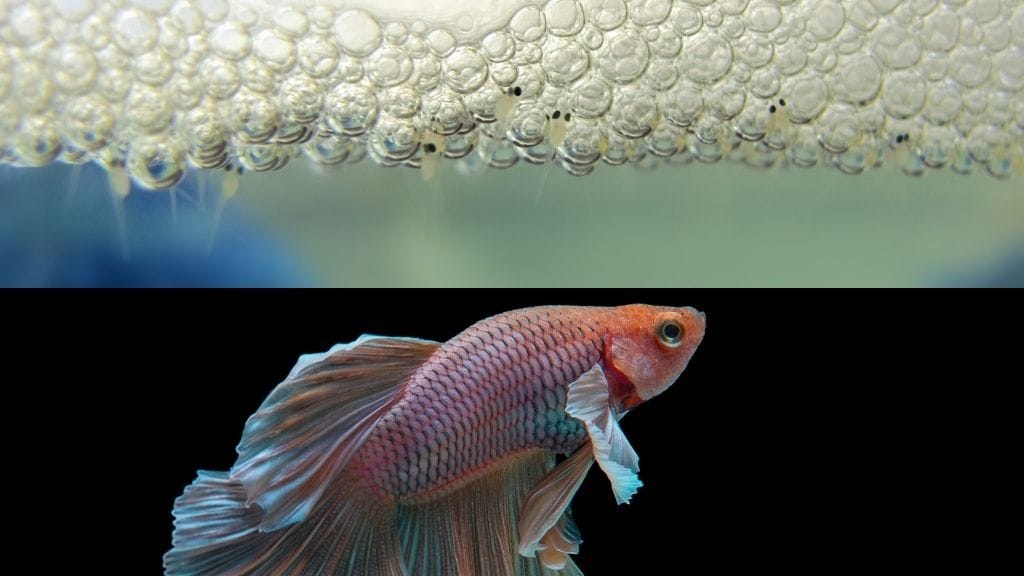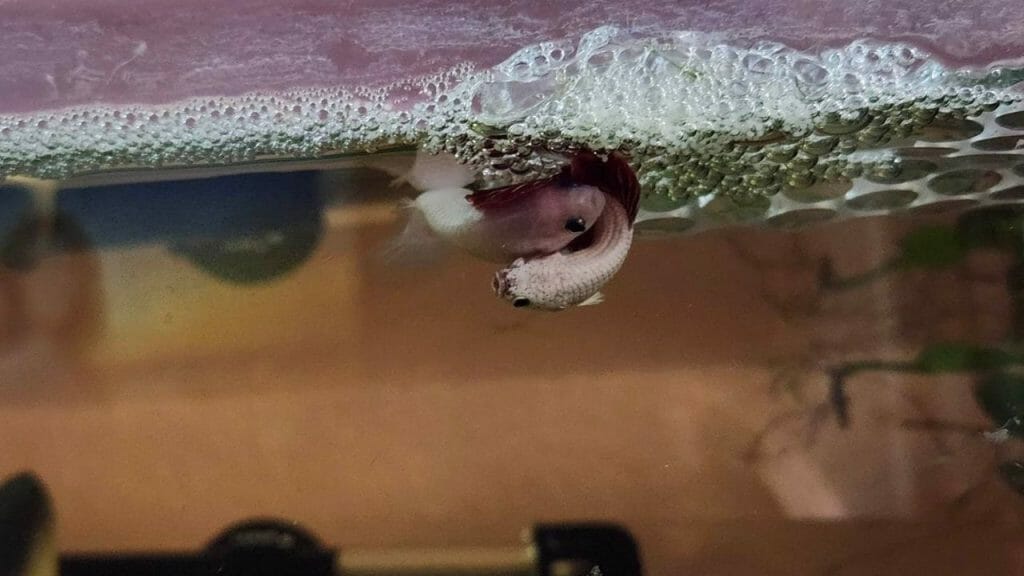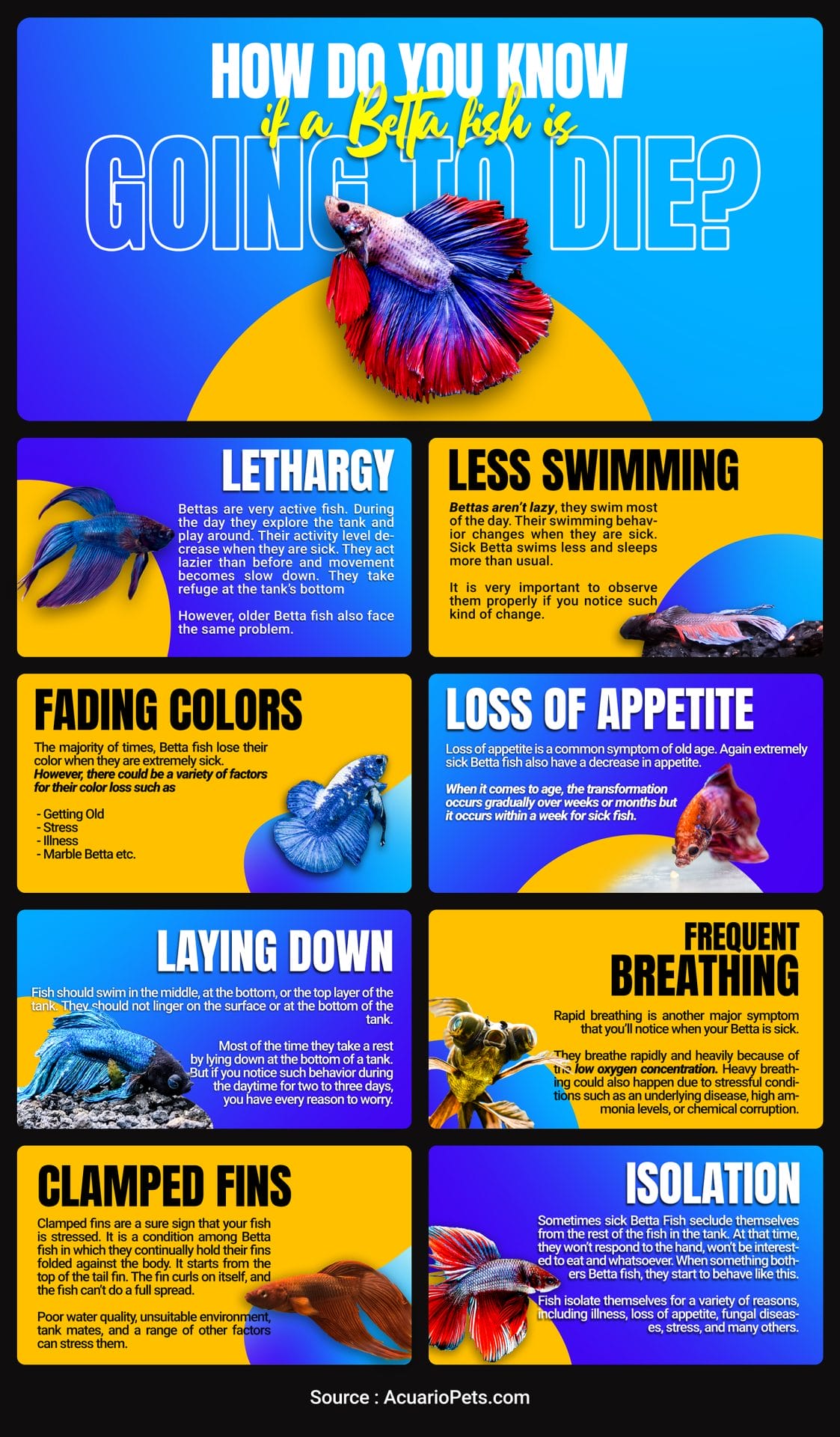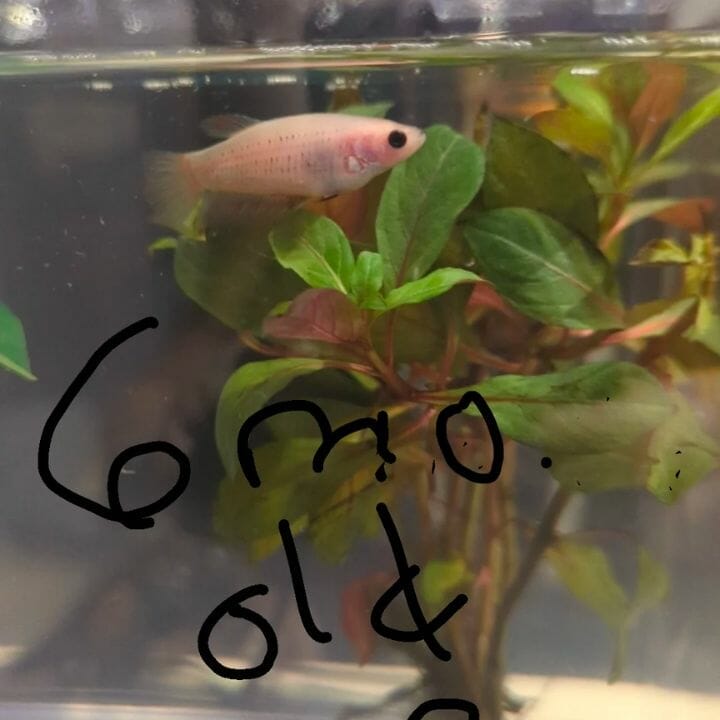Betta Fry Dying? Here’s Why and What To Do

It’s always a great idea to breed Betta Fry. But things might not always go right in this process. Many breeders have experienced extreme disaster in their Betta breeding Tank. Despite having a survival rate of 90%, some factors can lead to Betta Fry’s death.
Betta fries can die due to poor water conditions, poor feeding habits, bad maintenance, or some diseases. The first 3 reasons are mainly responsible for betta fry death.
But you can always save your fry from dying as most of these factors are in your control. Let’s dive in to see the reasons and how to make things right.
What Are The Possible Reasons Behind Betta Fry’s Death?
Unlike Adult Betta fish, Betta Fry doesn’t get affected by diseases that often. Adult Betta fish die of diseases like Dropsy, Fin rot, or other bloating diseases. But the good news is Betta fry is most unlikely to catch these diseases. But let me not blow out the chances completely.
So if not diseases, what are the culprits? Breeders around the world firmly believe that the environment around the fry has a big role to play here. Let’s make a list of reasons that can possibly lead to Betta fry death:
- Poor water condition.
- Increased level of chemical toxins.
- Improper feeding habit.
- Aggressive tank mates.
- Parasitic attacks.
- Hostile Tank.
- Inadequate maintenance.
Betta fish approaching death display several signs, as noted by Mary McCauley, owner of Mary’s Magic Bettas:
- Difficulty swimming, such as swimming erratically, pacing the glass, involuntarily sinking or floating, and/or involuntarily laying on their side.
- Changes in breathing such as breathing fast, heavy, or shallow
- Lethargy
- Loss of appetite
- Wasting or losing weight despite eating
- Changes in the appearance of their poop, especially if it becomes white/light and stringy
- Changes to their fins, like if you see pinholes, black or red edges if they start looking tattered or are deteriorating/tearing
- Loss of color, especially if the betta starts turning grey/white and loses previously vibrant colors
- Bloat or constipation
- Pineconing (look at the betta from a birds-eye view to see if the scales are lifted away from the body)
- Wounds or other sores or red spots
- Anything fuzzy – either woven and matted or sticking straight out. Can be from a wound, from the gills, or even from the mouth.
McCauley emphasizes the importance of thoroughly reviewing these symptoms for accurate diagnosis and suggests testing water parameters and consulting experienced betta keepers for advice.
Poor Water Condition
Probably the most important factor, when you think about Betta Fry mortality, is Water Condition. The water parameters have a direct effect on your Betta Fry. A fresh and healthy environment is a must to ensure healthy fry. The optimum water parameters include:
- An optimum pH range of 7 to 7.4.
- Water temperature between 84 to 86 degrees Fahrenheit.
- Conditioned water.
- Odorless.
- Dust-free.
- Almost zero ppm of harmful chemical toxins.
But this is never an easy job to keep your water fresh, especially in a breeding tank where hundreds of fry are being fed and kept.
After spawning and hatching, the waters get cloudy and dusty. It’s because of the increased ammonia level in the tank. Below the bubble nest, you’d notice so many waste products roaming. In this phase, it’s necessary to change the water frequently. Because the Fry is so vulnerable towards free chemical toxins.
After the 4th week, the tank water starts to get more contaminated. Uneaten food particles, metabolic waste products start to increase. These waste products finally settle on the floor of the tank and make home to millions of parasites.
Want to get a printable version of this infographic? Click here! [If you want to use this infographic on your website, please link back to this post as the source!]
Increased Level Of Chemical Toxins
Ammonia, nitrite, and nitrate are released from the waste products of your Fry. These are the most harmful substances that can kill your fry. Ammonia level of more than 25 ppm, nitrite, and nitrate level over 0.25ppm can be lethal.
So you should invest in a good water testing kit, to keep these substances below lethal range. Frequent water change happens to be the only solution for this problem.
How To Keep You Water Fresh?
It should be your prime concern. As Betta Fry are sensitive to a poor water condition, all your extra efforts should be given to water management.
To maintain a good water condition, you’ll have to keep some things in your mind. These include water change, removing waste products from the bottom of the tank, and using the proper method for changing water.
Want to get a printable version of this infographic? Click here! [If you want to use this infographic on your website, please link back to this post as the source!]
Changing Water Frequently Is A Life sparer
Yes, that’s right. Because of many factors, the water of your breeding tank gets polluted too easily. So, you must perform at least 50% of water change every day. If you don’t change the water every day, it’ll lead to:
- Cloudy and dusty water
- Bad odor
- Deoxygenated water
- Increased activity and reproduction of parasites
These conditions may not seem too serious but surprisingly enough, they are responsible for Betta fry mortality in almost every case. So try to follow these instructions below:
- Do partial water change every day, it should include almost 50% of the total water
- Perform 100% of water change at least once a week
- If you spot any dead Fry, try to change water immediately.
- If your Betta fry shows abnormal behavior, consider changing the total tank water
Removing Waste Products
The waste products at the bottom of the tank are the source of all pollution. So make sure you are cleaning those gravel and sands well. It’s also a good idea not to put any decorating1 material in a breeding tank.
Follow these methods to change the water and to remove waste products:
- You can use a hosepipe to suck out all the waters out of your tank, don’t use anything too powerful as it may cause injury to your Betta fry.
- Another method is to use a bucket. Use a bucket to take the waters out from the upper surface of the tank. Then use a mug for the bottom. This is an easy and safe method.
Always Keep Temperature And pH Within Range
Always keep temperature and pH at an optimum range. Sudden fluctuation in temperature and pH will freak out your Betta Fry.
The temperature has a big role to play here. Temperature below 76 degrees Fahrenheit and above 86 degrees Fahrenheit is lethal. So it’s necessary to keep it within 82 to 84 degrees Fahrenheit. Temperature is closely related to all the physiological activities of Betta Fry.
Both alkaline and acidic mediums are risky for Betta Fry. So try to keep the pH within 7 to 7.4.
If you manage to maintain these two parameters, consider half of your work is done.
What Should You Feed Your Betta Fry?
Many active breeders suggest feeding living and frozen foods boost their bettas’ health status and nutrition, which both lead to faster growth and a larger size at growth. Large amounts of high-protein food sources, combined with frequent water changes, have been shown to hasten the development of betta fry.
The living foods mentioned below are ideal for growing betta fry and such foods could be available as custom made from a decent fish shop. The list is-
- Baby brine shrimp, Fairy shrimp,
- Microworms, Walter worms, Banana worms, Grindal worms
- Daphnia, Infusoria, Vinegar eels
Betta fry that is very young consumes only alive food. But when the fry is mature enough, you should add pellets to the meal.
How Much And How Often To Feed Your Betta Fry?
Diet can be a crucial factor in saving a betta fry. The diet your betta fry gets should be dependent on the size of the fry. Feed the fry using the biggest bits that will fit in the betta’s mouths.
You should start feeding the fry once they have broken free from the egg sacs underneath the bubble habitat and are floating freely. Instead of two big feedings a day, give the fry many small feeds during the day.
Feed your fry 3 to 4 times a day for the greatest result. Tiny servings can simply guarantee that all of the food is consumed. When combined with daily water changes, this approach yields large, and beautiful betta fish in less time than the other methods.
Dos And Don’ts In A Betta Fry Tank
To maintain the safety of your betta, an ideal tank plays a crucial part, for that you need to know what you need to avoid and what you need to maintain while creating a betta fry tank. And those are-
- Whenever it comes to tank lighting, LED aquarium lighting is the holy grail. Fries require darkness to sleep well at night and moderate light throughout the day. Providing them with far too many hours of light would deprive them of necessary rest.
- Also for maintaining a lighting schedule, a timer is the best thing to have
- An aquarium filter is required in a fry aquarium as it aids in the removal of waste. Also while choosing a filter don’t choose one that might create heavy water flow such as Power Filters. Use light filters like sponge filters. These are also excellent for stopping fry from being entangled in the filtration system.
- Don’t overcrowd your betta fry. Try to maintain a 15-20 gallon water tank for each 100 betta fry. Don’t put too much space too. As that might keep them from finding food.
- Don’t put any accessories that might have sharp edges or anything that is made of sharp material.
- Don’t put anything that might create reflection. It might shock the system of your betta fry.
Aggressive Tank Mates
It’s unusual of you if you have kept other fish with your Betta fry. You should not even keep the parent fish with the Fry after one week. Fish are quite aggressive when it comes to food. They can even eat their own offspring without any consideration.
Parasitic Attacks
Betta Fry is less prone to diseases. But that doesn’t mean they are completely safe from diseases. These attacks can be either:
- Fungal
- Bacterial.
Betta fry can catch the following diseases:
- Betta dropsy: Dropsy is the most common and fatal disease in Betta Fish. Here you can learn more about betta dropsy.
- Betta Ich: Betta Ich is a common parasitic disease. It is a very common disease to tropical fish and need proper attention. I have dedicated a complete post on betta ich and what to do if your betta suffers from ich.
- Betta Fin Rot: Betta Fin rot is not common in Betta Fry. You may notice fin rot after the 12th week.
Maintenance Of Your Tank:
From spawning to Hatching and then till the 12th week, breeding betta fry is all about maintaining everything properly. The maintenance should include everything, from food to water.
Check the water parameters daily, make a feeding chart, select the proper foods and keep the tank clean. A lot of failed Betta breeding was a result of poor maintenance. So if you put everything in the right order, there’s a good possibility for all your Betta Fry to survive.
Frequently Asked Questions
What are betta fry survival rate?
The survival rate of betta fry is over 90% when proper care is provided. It is not very common for betta fry to die and if they are dying, something may be wrong.
What is the optimum temperature for betta fry tank?
The ideal temperature range for a betta fry tank is between 78°F and 80°F.
Why is my betta fry staying at the bottom of the tank?
There could be several reasons why betta fry are staying at the bottom of the tank.
One reason could be that they are newborn and their swim bladder has not fully developed yet, which can cause them to struggle with swimming and sink to the bottom.
Another reason could be poor water conditions or toxins in the water that can affect the fry’s health and behavior.
Conclusion
As previously mentioned, unlike the betta fishes, betta fry doesn’t get many diseases, your worry as a betta fry keeper lessens up to 50%. But the other factors that might play a role in harming your betta fry, still keeps the other 50% remaining.
However, don’t worry. Now that you know what you must do and don’t while raising a betta fry, your chance of losing a betta fry decreases significantly.
About Author
Hello, I’m Muntaseer Rahman, the owner of AcuarioPets.com. I’m passionate about aquarium pets like shrimps, snails, crabs, and crayfish. I’ve created this website to share my expertise and help you provide better care for these amazing pets.
Disclaimer
This site is owned and operated by Muntaseer Rahman. AcuarioPets.com is a participant in the Amazon Services LLC Associates Program, an affiliate advertising program designed to provide a means for sites to earn advertising fees by advertising and linking to Amazon.com. This site also participates in other affiliate programs and is compensated for referring traffic and business to these companies.






